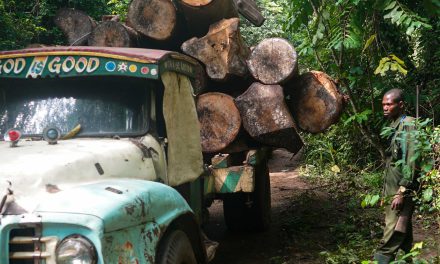Recent analyses help us understand what is working to reduce organised wildlife crime, and it is more about organisational systems and resilience, bottom-up approaches and strengthening local rule of law than tactical brilliance. Wildlife crime (defined as the whole value chain from illegal killing or poaching, through trafficking illegal products to the final market) is a major form of transnational organised crime, worth billions of dollars and affecting every continent.
Over the past decade, multiple strategies have been taken to combat wildlife crime, including wars on poaching, criminal investigation approaches to disrupt and dismantle organised criminal networks, demand reduction campaigns and more recent market friction approaches, as well as policy approaches focused on international agreements and expanding international treaties.
A recent situational analysis undertaken by the SADC Secretariat, to understand current trends, progress and challenges in combating wildlife crime in the region, has helped to shed light on some successes in southern Africa. This analysis is based on consultations with 141 individuals, including 57 government officials from 15 of the 16 SADC member states.
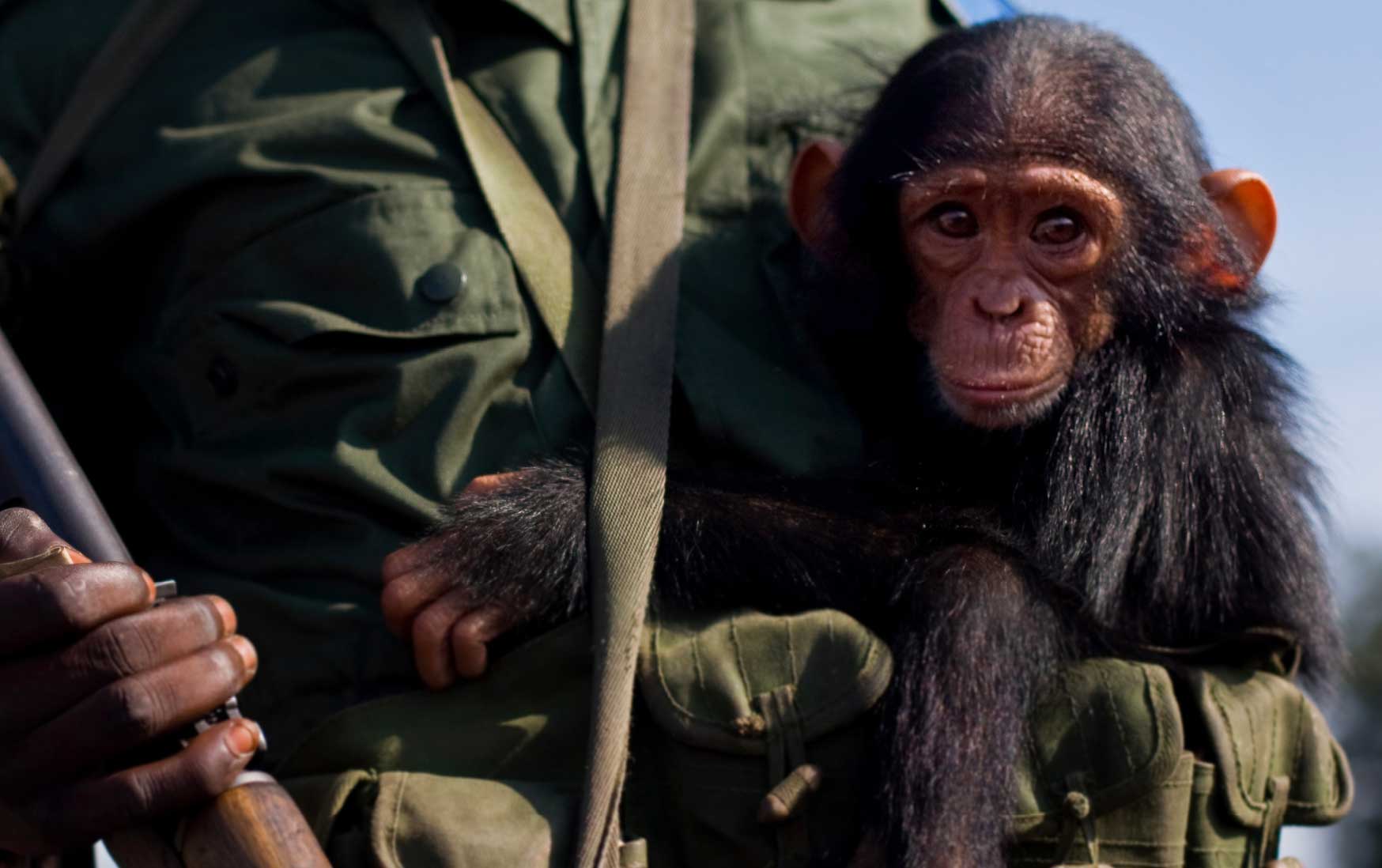
A Congolese soldier holds a baby chimpanzee while manning a checkpoint in the entrance to the provincial capital of Goma, Congo, in November 2008. The soldier explained that he’d killed the baby’s mother to feed himself. He said he intended to sell the baby. Photo: Yasuyoshi Chiba/AFP
Malawi has gone from a significant ivory trafficking hub 10 years ago to a challenging environment for wildlife traffickers now – despite increasing transnational drug trafficking and human smuggling. Tanzania was an epicentre of elephant poaching and ivory trafficking from 2008-2015 and is now a bit-player in these illicit economies, despite politically powerful traffickers who have never been prosecuted.
Northern Mozambique suffered similarly to Tanzania from 2009-2017 and now ivory is considered a risky commodity for traffickers there, while drugs and gemstone trafficking increase and endemic corruption and governance failures have given rise to a local insurgency. Namibia is arresting, prosecuting, and transparently reporting on corrupt officials involved in the rhino horn and ivory trades, while concerns regarding timber trafficking and illegal commercial fishing intensify.
The defining element in these examples, and others in the region, have been trusted wildlife crime units (WCUs), that lead investigations and support the prosecution of organised wildlife criminals. These specialist units have succeeded by employing tried and trusted criminal investigation techniques, while resisting corruption, to prioritise and target significant foreign individuals (Malawi, Tanzania, northern Mozambique, and Uganda), key local suppliers to untouchable traffickers (Tanzania and Mozambique) and known corrupt facilitators (Namibia).
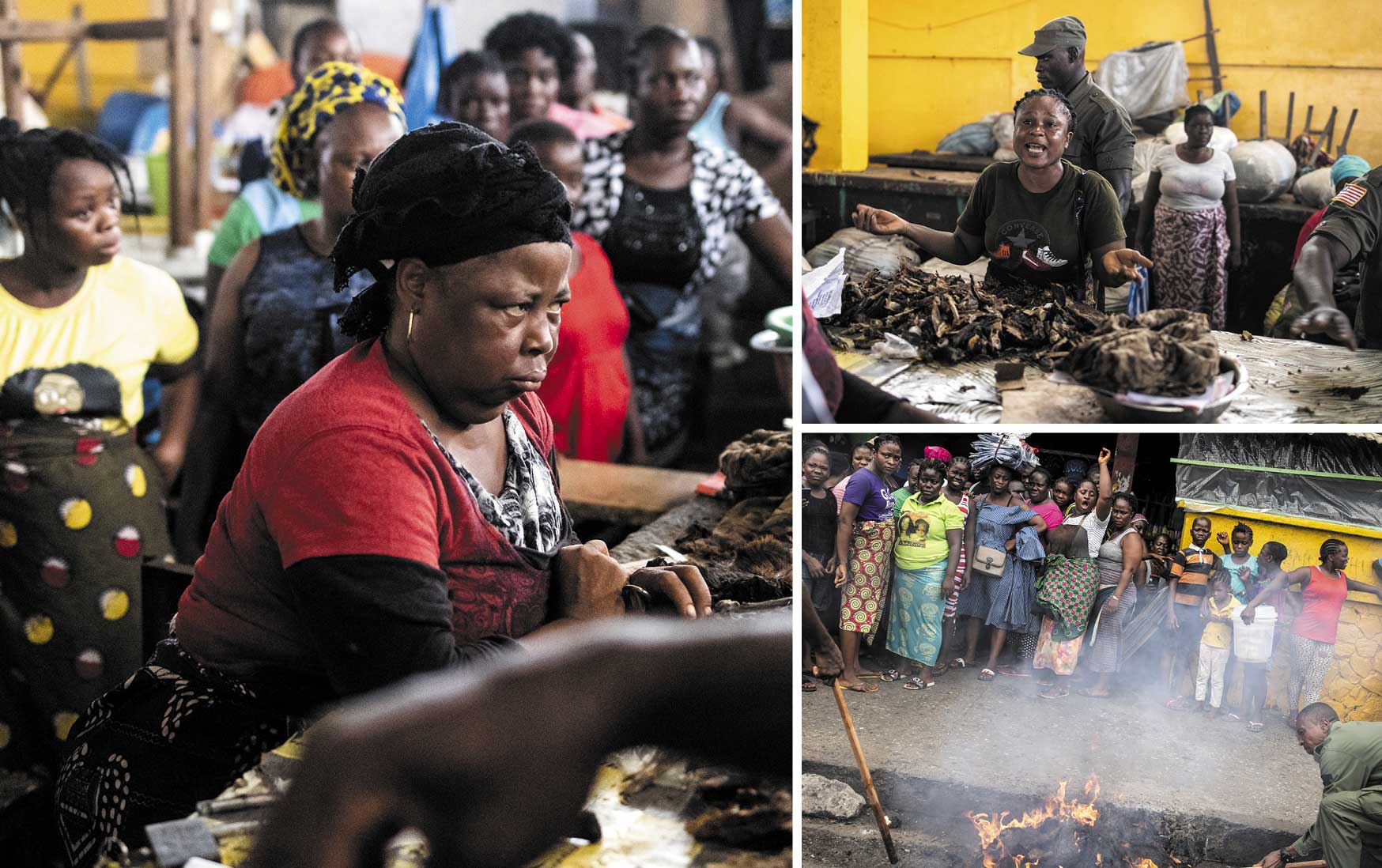
Sellers and their customers react as members of the Confiscation and Anti-smuggling unit of the Forestry Development Authority confiscate and burn illegal bush meat at a market in Monrovia, Liberia. Photos: John Wessels/AFP
Mandated WCUs often work successfully with other government agencies, and, critically, provide a nexus for trusted relationships with neighbouring countries. Successful cases against transnational organised wildlife crime networks in the region have been built from the ground up by national WCUs working together, often without formal international agreements. Examples include the Lin-Zhang syndicate in Malawi, the Kromah network in Uganda, the Shuidong network in multiple countries and the Chupi Mateso network in northern Mozambique.
Successful WCUs focus on leadership, internal trust, and resilience to corruption; are mandated to address organised crime; use trusted criminal investigation techniques to build cases; work closely with national prosecuting authorities, and have adequate operational funds. All successful WCUs have trusted local partners supporting them with resources and capacity.
At a Protected Area (PA) level there have also been successes, where poaching outbreaks have been stopped or not taken hold despite their prevalence nearby – for example, North Luangwa and Lower Zambezi National Parks in Zambia, Gonarezhou National Park in Zimbabwe, Ruaha National Park in Tanzania, and others. What sets these areas apart are not anti-poaching strategies or tactics, but rather a focus on leadership, staff motivation, coordination with other local agencies in the landscape, local intelligence collection and analysis, managing or engaging with the whole law enforcement chain from the scene of the crime to the local courts, and often integrated approaches that included working with local people living around the PA. Almost all of these areas already had established management partnerships. With this foundation, effective anti-poaching and broader law enforcement approaches have worked.
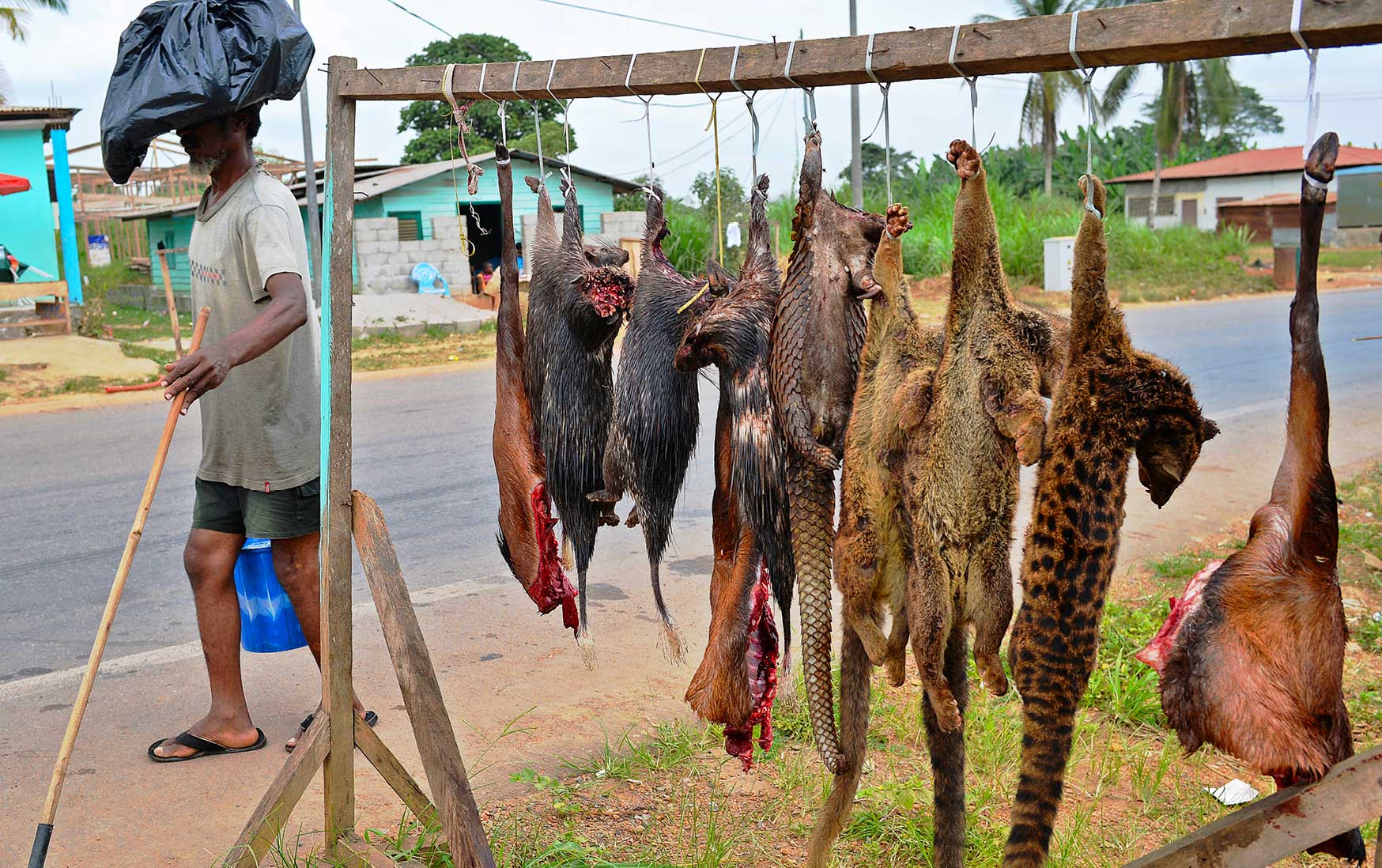
Bushmeat, including pangolins, bush rats and tiger cats for sale on the roadside outside Bata, Equatorial Guinea. Photo: Carl De Souza/AFP
One of the fundamental lessons is that where there was success in reducing wildlife crime, at either PA, national or transnational level, there were almost always partnerships. The corollary is not true – not all partnerships lead to success, especially as collaboration and partnerships carry organisational costs. Thus, these costs need to be borne strategically and with consideration. But to date, success in combating wildlife crime has required partnerships and collaboration, always based on trust, and almost always with local organisations or international organisations, with a long history in that country.
Strengthening national legislation, involving and building the capacity of prosecutors, engaging with the judiciary, and some long-term local community stewardship and pride programmes have also had a positive impact on reducing wildlife crime.
But key challenges in southern Africa include a lack of regional coordination, difficulties engaging with market countries (particularly in Asia) on law enforcement, critiques of community-based approaches that focus only on benefits and costs, and concerns with the impact of the militarisation of anti-poaching responses.
Before getting to recommendations for future work to reduce wildlife crime, it’s worth noting current trends, emerging issues, and the results of another recent analysis into the convergence of wildlife crime and other illicit economies.
The SADC analysis found that the most seized species and commodities are still elephant ivory, rhino horn, pangolin scales, abalone, and large cat body parts (pelts, bones, teeth and claws). However, there are increasing seizures of other commodities – live pangolins, hippo teeth, turtle shells, live reptiles, African grey parrots, bushmeat and rosewood timber. This may be the result of greater trafficking of these products but is also likely the result of improved detection and growing awareness of the breadth, diversity, and overall value of the illegal wildlife trade (IWT).
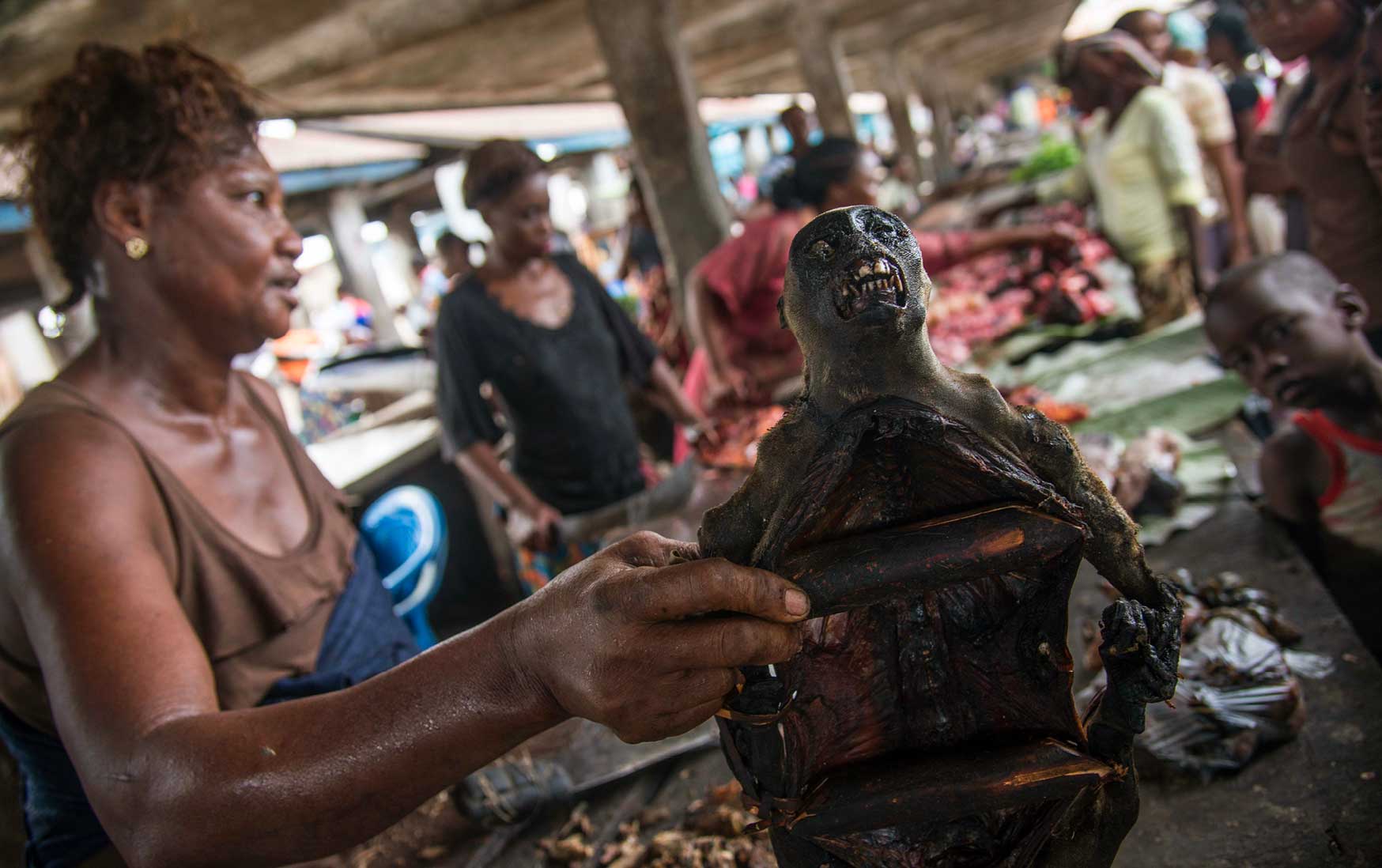
A bushmeat seller markets her wares. Photo: Junior D. Kannah/AFP
Seizure records since 2017-2018 have shown a continental shift in the main export region for high-value wildlife products from East Africa to central and West Africa – specifically Angola, the Democratic Republic of Congo and Nigeria. This is likely driven by targeted law enforcement efforts in east and south-east Africa and somewhat by a reduction in elephant populations. This shift in export region has also seen a shift in the sourcing of products. For example, 88% of 196 tusks sampled for genotyping from an 8.8 ton of ivory seized in Singapore in July 2019 were from the Kavango-Zambezi (KAZA) conservation area – a notable change from 48 prior seizures from 2002-2019.
New markets are appearing in Africa, both online (an emerging online market for African grey parrots in Kenya, for example) and amongst expatriate communities (live pangolins sought by some expatriate Vietnamese and Chinese people). Organised wildlife crime networks are also becoming more “professional” and thus harder to penetrate. This maturing of these networks is leading to a growing convergence with other illicit economies.
A recent two-year study by the Global Initiative Against Transnational Organised Crime (due to be published in early 2023) has unearthed some key dynamics of the convergence between wildlife crime and other illicit economies in East and southern Africa. Based on 105 interviews, and site-level research into nine illicit flows or key hubs, this work characterised IWT-related crime convergence into three functional types:
Network convergence: when the same organised criminal networks trade in multiple commodities.
Hub convergence: when multiple commodities (trafficked by different networks) pass through a critical transport hub or other bottleneck, typically with the support of a corrupt facilitator or broker.
Broker convergence: when local brokers source multiple product types to sell into various criminal economies, typically lower down in the criminal value chain where products are sourced, and separated from hub convergence, which is specific to a geographic location or transport hub.
Importantly, corruption and illicit financial flows were not included as convergent crimes as these were ubiquitous and considered business-as-usual for organised wildlife criminal groups.
The study found that most convergence occurs further along the value chain (that is, more associated with trafficking than poaching – although there are important exceptions), that there is less network convergence than expected, but that hub and broker convergence is pervasive. It also found IWT networks to be less vertically integrated than other organised crime types.
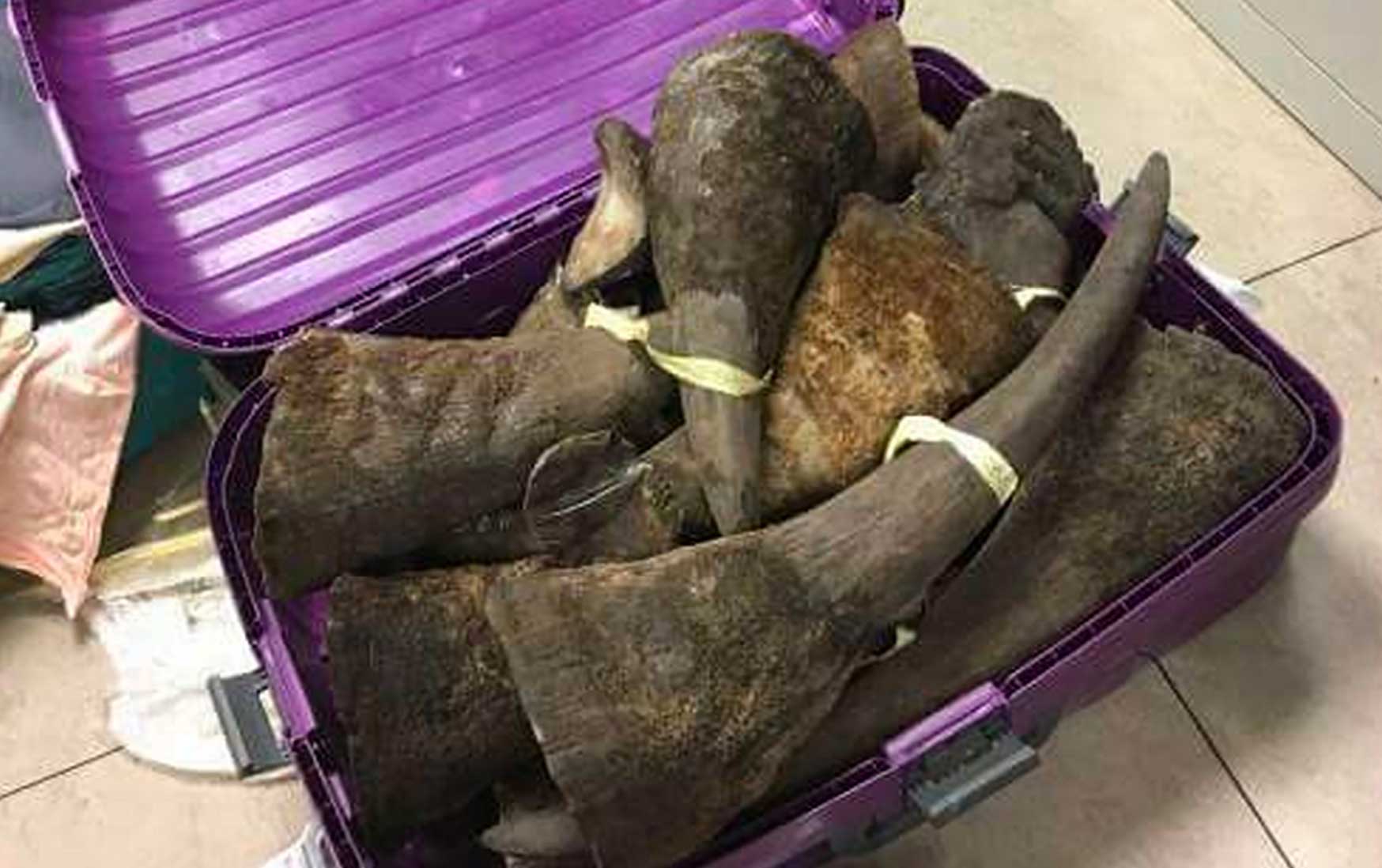
Rhino horns smuggled in a suitcase. Photo: AFP
Network convergence was found at all levels in the illicit abalone economy in South Africa – from sourcing to trafficking, including interesting examples of value exchanges. It was found in some cases between the heroin and IWT economies in a few countries – although not as pervasively as expected given the long history of these trades in East Africa, and in rhino poaching networks in South Africa and southern Mozambique that also engage in other violent crime types.
Hub convergence, sometimes involving private sector freight forwarding agents, but always involving corrupt officials, was found in every transport hub investigated – multiple airports in Mozambique, Oliver Tambo airport in South Africa, and Ivato airport and Mahajanga seaport in Madagascar. In many cases, a single key agent or official facilitated the trafficking of multiple illicit products from diverse criminal networks.
Broker convergence was common on the supply side of the IWT illicit economy and was found when investigating illicit trades in lion body parts, pesticides (used for poisoning) and gemstones between northern Mozambique and Malawi, as well as between heroin supply and IWT sourcing in multiple countries – including Mozambique, Malawi, Zambia, and Uganda.
What can we learn from these analyses and what did those consulted recommend we do to reduce regional wildlife crime?
- Fully understand the wildlife crime value chain and target actions for maximum disruption; don’t just focus on the easiest criminals.
- Develop and support resilient WCUs.
- Strengthen organisational systems around specific values and individual qualities (for example integrity and professionalism) and develop selection processes, training, leadership, and career progression that emphasises these and brings the best out in individuals, maintains motivated and structured teams, and builds resilient units and organisations.
- Develop and implement systems that support and protect staff – trained, trusted contact points, use intelligence to identify risks to staff, integrity testing, and holistic wellness support.
- Directly address the militarisation of conservation law enforcement. That is, use police training methods for how to interact with people and to understand the social contract they have with their citizens.
- Continue strengthening criminal justice systems to increase speed and consistency – research shows these play a far more deterrent role than the length of sentence.
- Focus on local rule of law broadly, especially around remote PAs or trafficking hubs.
- Ensure proactive court monitoring, both passive (monitoring records for patterns) and active (using journalism or high-level advocates to negate possible corruption in high-profile cases).
- Target corrupt facilitators and money launderers – this is where illicit economies converge.
- Support building informal networks between law enforcement units and sections of the criminal justice system.
- Support transnational cooperation based on where the investigations develop, then build formal systems to support these once they are operating.
- Understand wildlife crime-related issues for local people beyond just economic incentives and then align with or support these, if possible, for example, improved service delivery and local safety and security.

Alastair Nelson
Alastair Nelson has 28 years field experience implementing and leading field-conservation programmes in the Horn of Africa, East and Southern Africa. Alastair is currently the Managing Director of Conservation Synergies, an organisation that supports governments and their partners to look at conservation problems from new angles, working with experts from other fields to understand drivers and patterns, then develop practical solutions.




